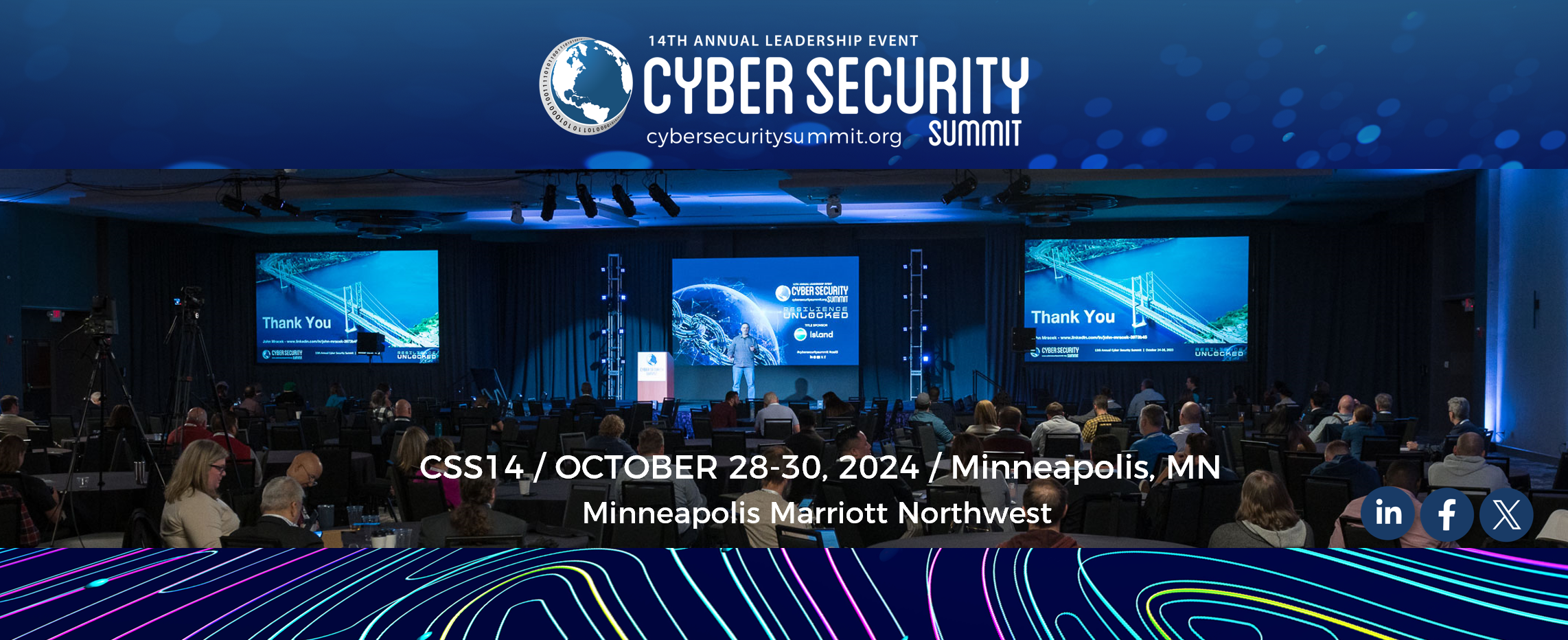
Wednesday, October 30, 2024 — 8:15 AM- 4:30 PM
Women are needed in cybersecurity roles now more than ever. The myriad threats and frequency of attacks is rising exponentially, and millions of new cybersecurity roles are projected over the next decade. Filling them with a diversity of human perspective leads to a stronger defense and resilient workforce. Once upon a time, women couldn’t vote, or go to school, or be senators, soldiers, CEOs, or special agents. Today we’re ALL IN for a world where women work, and we all win!
Agenda
8:00 AM — WiCyS Breakfast with Executive Director Lynn Dohm and WiCyS MN President Judy Hatchett
Women are making a difference in cyber roles and WiCyS is where the recruitment, retention, and advancement of women in cybersecurity happens! Learn about the Women in Cybersecurity (WiCyS) organization, meet members and hear about the events, activities, mentoring and learning opportunities we support.
9:00 AM — Designing a Balanced Career Path
Are you in a job that isn’t right? Do you know there’s more, but aren’t sure how to make a move? Find direction as you craft a career path that’s both broad and balanced. Learn the value that comes from adding variety to your work experiences and see how the sum of your skill sets combined with the range of knowledge to open new opportunities. We will tackle “work life balance” with tips on leadership, sponsorship, mentorship, and networking that will inspire a confident journey.
10:30 AM — Leveraging Innovation: Artificial Intelligence Applied to Digital Forensics
A Digital Forensic Investigation that identifies the cybercriminal is of no use if the case won’t hold up in court, and this technical discussion will focus on the complex process that must be followed to take down bad actors. Evidence must be managed with precision to demonstrate a clear chain of custody, and while it may seem counterintuitive, artificial intelligence can add significant process efficiency to this critical work.
11:30 AM — Fireside Chat: Women in Cyber Luncheon: Optiv Presents Tracy Walder
Join a whirlwind session with Tracy Walder, one of the few women who boast both CIA and FBI federal service. Tracy traveled the world as a CIA Counterterrorism Staff Operations Officer (SOO) across Afghanistan, Jordan, Uzbekistan, Algeria, Morocco, Denmark, Sweden, Italy, and England. She later worked as a Special Agent at the FBI Los Angeles field office, specializing in Chinese counterintelligence operations. Today, Tracy is a published author and a TED Talk, top-tier talent!
1:30 PM — Secure the Digital Frontier: A Complete Guide to Identity and Access Management
Identity and Access Management are essential to cybersecurity. Effective IAM starts with threat identification and an outline of business and security requirements. Learn to distinguish human from non-human identities, and the importance of managing both. Hear why governance is crucial for compliance with regulatory requirements and frameworks. The core pillars of IAM —identity lifecycle management, authentication, authorization, directory services, privileged access management, and audit and compliance—are detailed to illustrate their collective importance. Finally, emerging trends are explored as we look to the future of IAM.
3:00 PM — Unleash the Benefits of Diversity
As women in the technology industry rise to executive roles, the unique skill sets they bring are sometimes overlooked or not recognized for their value. Learn how to identify and articulate the leadership strengths that result from past societal and cultural challenges – in a way that will align or ignite a personal brand and boost a career journey.
4:00 PM — Fireside Chat: The Role Risk Plays for Cyber Security Leaders
Dr. Shayla Treadwell, VP of Governance, Risk and Compliance at ECS, shares best practices to optimize your organization’s cyber risk tolerance. We will define ‘cyber risk tolerance,’ then review foundational needs, and socialize strategy. Any program – enterprise-level, business unit, or per contract/client – must first identify, analyze, and document risk. Then pick the strategy that makes sense. Learn how to communicate risk information to executives who are new to the process or disinterested and see how organized information and clear communications drive solid decisions and move the maturity model forward.

